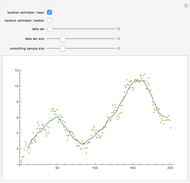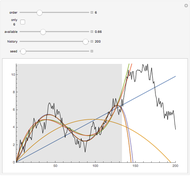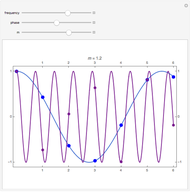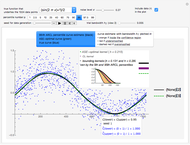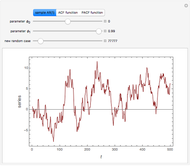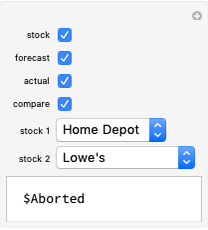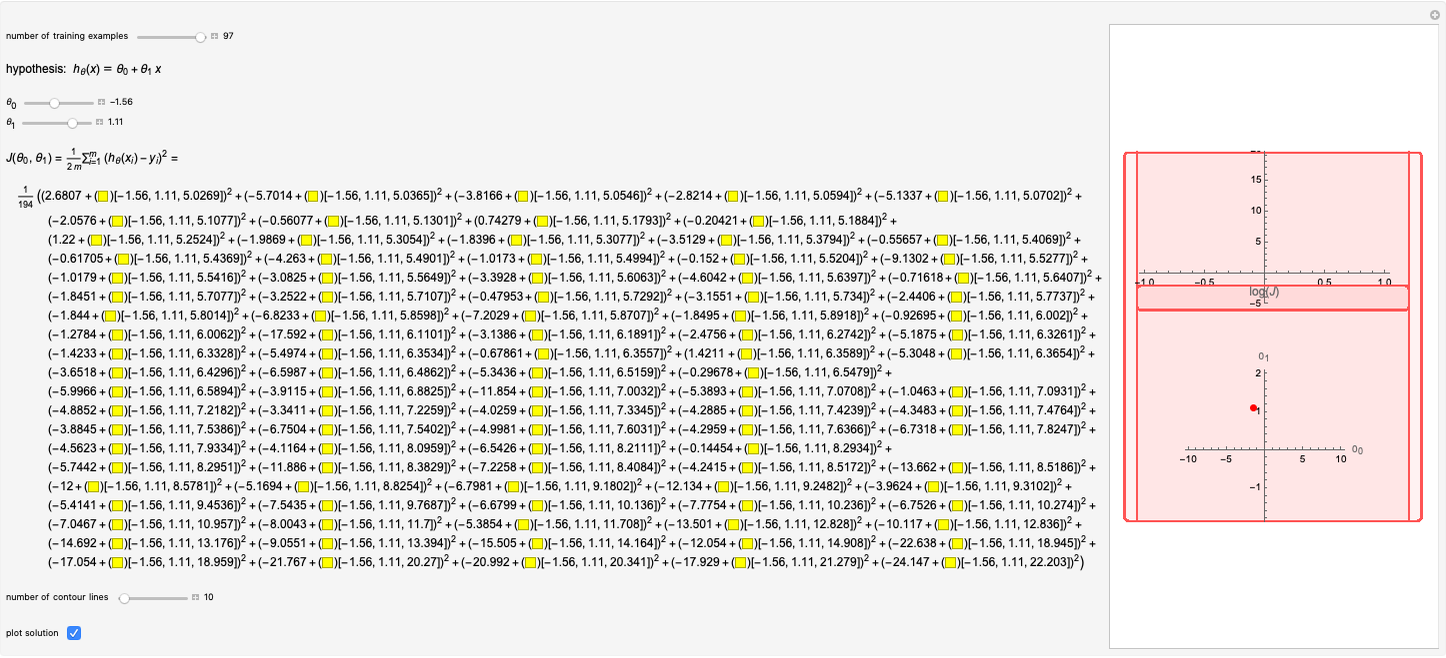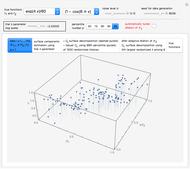Forecasting with Exponential Moving Averages

Requires a Wolfram Notebook System
Interact on desktop, mobile and cloud with the free Wolfram Player or other Wolfram Language products.
For stationary or nearly stationary data, the exponential moving average is a simple method for time-series forecasting. Choose between forecasting and smoothing to see the difference between them;  is the smoothing parameter in the exponential moving average and
is the smoothing parameter in the exponential moving average and  is the mean square error between the forecast (red curve) and actual values of the data (blue curve). Larger values of
is the mean square error between the forecast (red curve) and actual values of the data (blue curve). Larger values of  cause less smoothing.
cause less smoothing.
Contributed by: Bruce Atwood and Lingzhi Meng (August 2013)
(Beloit College)
Open content licensed under CC BY-NC-SA
Snapshots
Details
The forecast at time  is given by
is given by  where
where  is the actual value of the time series at time
is the actual value of the time series at time  . This recursion starts at
. This recursion starts at  . When
. When  , the forecast is
, the forecast is  for all time and when
for all time and when  , the forecast is the last observation. For more information on forecasting with exponential smoothing methods, see [1].
, the forecast is the last observation. For more information on forecasting with exponential smoothing methods, see [1].
Students should ask themselves: is there any relationship between the appearance of the data and the optimum value of  for forecasting? Why isn't the exponential moving average a very good forecasting method for data with a trend?
for forecasting? Why isn't the exponential moving average a very good forecasting method for data with a trend?
Reference
[1] S. G. Makridakis, S. C. Wheelwright, and R. J. Hyndman, Forecasting, Methods and Applications, 3rd ed., Hoboken, NJ: John Wiley & Sons, Inc., 1998.
Permanent Citation








